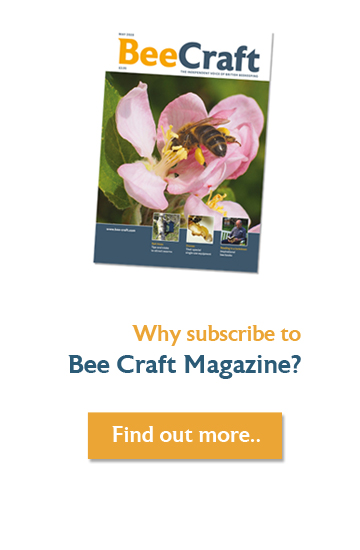I was fortunate a few weeks ago to have a really interesting conversation with Jersey’s Asian Hornet Co-Ordinator, Andrew Christie - you will have no doubt read his July report posted as an article.
I have tried to summarise the content of our discussion on the Asian hornet and what they have learned about it on the island.
Their first queen was sighted on 7th June this year, earlier than in 2019. Although the reason for this and the lower number of sightings this year is not clear, it is thought it could be that the wet and variable winter and possible fungal diseases did not help the survival of queens. Having survived the winter, while it requires a few days at 13° in order to bring them out, unlike bees the weather doesn’t play an important role in their activities.
Initially the primary nests are small, around the size of an orange, and generally low down - 2/3 metres off the ground. These are in sheltered places and start with the queen building around 7 to 9 cells in which she will lay eggs as soon as they are deep enough. She then builds cells around and lays eggs in those. These provide warmth for the first eggs and the warmer the eggs, the faster they develop. The growth from egg to worker is longer for the first generation - around 40 days - and they are small, about the size of wasps. Once they emerge they feed the next generation, which emerge in around 30 days.
During July most primary nests will transition to secondary nests in trees. It isn’t clear whether the site is found and chosen by the workers or the queen. The primary nest is maintained by the workers until there are no eggs, larvae, or pupae remaining - likely to be towards the end of August.
A tertiary nest may be created if the secondary nest is removed. In Jersey they operate a natural removal policy - no pesticides, and use hoist equipment to remove nests at night after which the nest is frozen to kill the contents.
Asian Hornets don’t fly at night unless they are disturbed and, as a result of equipment malfunction, one such removal resulted in some workers scattering and flying to a nearby light source. They flew to the eaves of a house around 30 metres away and started building a nest. This they do very quickly as when this nest was removed around 48 hours later, the workers had already built 42 cells. The queen was in the original nest and it was too early for virgin queens but as with bees, absence of a laying queen does give rise to laying workers.
Drones generally start to appear on the island in September, with queens late September or October.
This year, when a garden bank was being excavated, the digger went through a primary nest, destroying it. Needless to say the operator didn’t hang around! It does highlight the potential dangers of landscaping or garden work where the undergrowth or hedges can provide a well hidden location for these primary nests.
A number of UK organisations are investigating different methods of monitoring Asian hornets and Jersey is an ideal location for their research. Definite work in progress which it is hoped will help in the fight against these invaders.
Wendy from Bee Craft
Subscribe to BeeCraft Magazine
- £30.00* - Digital Subscription | 12 months
- £45.00* - UK Printed Subscription | 12 months
- £80.00 - UK Printed Subscription | 24 months
* UK residents over the age of 18 can subscribe to BeeCraft via Direct Debit and save up to £7.00 on your subscription. For more information on our Direct Debit scheme, please click here.
- £30.00 - Digital Subscription | 12 months
- £55.00 - Digital Subscription | 24 months
- £85.00 - RoI & European Printed Subscription | 12 months
- £30.00 - Digital Subscription | 12 months
- £55.00 - Digital Subscription | 24 months
- £110.00 - Worldwide Printed Subscription | 12 months



